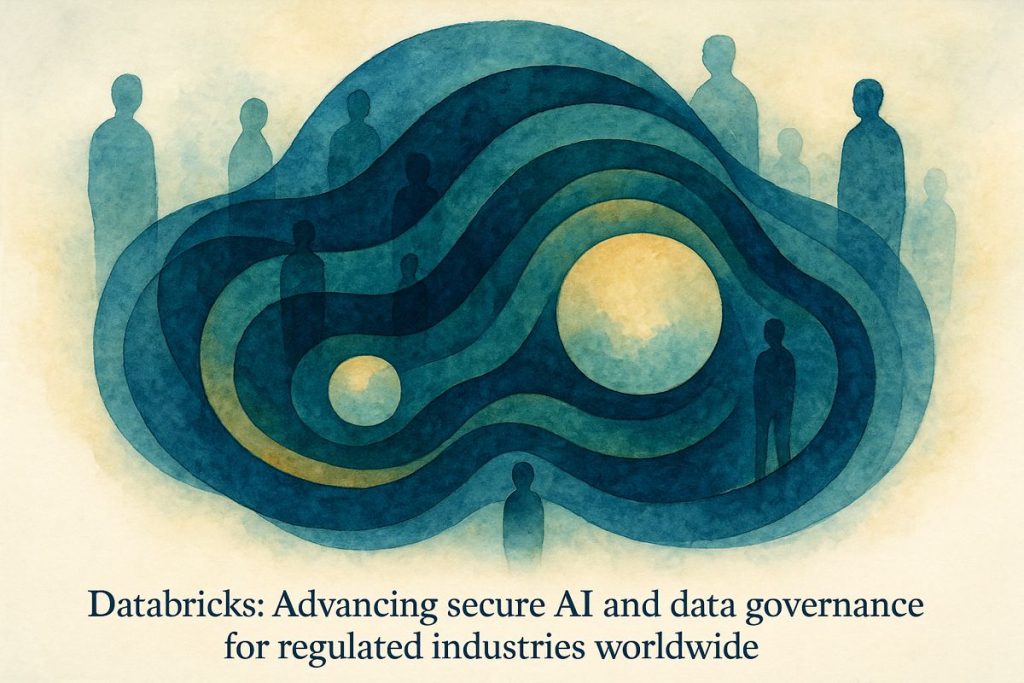Databricks is making the cloud feel more like a safe vault than a leaky attic, helping everyone sleep a little easier. Their 2025 updates make handling data safer and simpler. They added tools like Serverless Egress Control to tightly watch and block outgoing data, stopping leaks before they happen. Private Link now covers more clouds, letting companies move data in secret, and Multi-Key Protection locks information in many layers, like nesting dolls. Their new security add-on automatically checks for dangers, reports problems, and helps teams follow tough rules.
What are the key Databricks security and compliance updates for 2025?
Databricks’ 2025 security and compliance updates include:
– Serverless Egress Control to restrict outbound data traffic
– Expanded Private Link for secure, private data transfer across major clouds
– Multi-Key Protection for layered encryption
– Enhanced Security and Compliance Add-On with automated monitoring and compliance features
– Broader regulatory certification support
The Regulatory Labyrinth: Why Security Isn’t Just for Paranoids
Something about the smell of burnt espresso and the flicker of fluorescent lights in a too-cold conference room always brings out my inner compliance philosopher. Maybe you know the feeling—a nervous flutter in your gut as you realize just how labyrinthine modern security requirements have become, especially if you’re wrangling data for a pharmaceutical giant or a government agency. I mean, who hasn’t jolted awake at 2 a.m. pondering the fate of a misplaced encryption key?
Databricks, the analytical behemoth behind many of today’s most ambitious AI and data projects, seems to have read the collective anxiety of enterprise IT teams like a well-thumbed palimpsest. In 2025, they’ve rolled out a suite of features that feels less like a checklist and more like a forcefield: fortifying serverless architectures, expanding cryptographic arsenals, and—yes—finally making the cloud feel less like a leaky sieve and more like a hermetically sealed vault.
But does all this actually make life easier for real-world teams—or is it just another layer of regulatory confetti? Let’s dig in, with the faint aroma of burnt coffee still lingering in the air.
Serverless Egress Control: Keeping the Data Hounds at Bay
First up, the pièce de résistance: Serverless Egress Control, now generally available. (I’ll admit, I once dismissed this as a marketing flourish—until a client’s rogue notebook quietly phoned home to a server in, let’s say, “a faraway place.” Ugh.) With this tool, Databricks lets admins govern, restrict, and—when necessary—slam the door shut on outbound traffic from Notebooks, Model Serving, Delta Live Tables, and more. You don’t always want your data gallivanting across the digital steppes, do you?
The result is a hyperspectral, almost MRI-like clarity into what’s leaving your serverless environment. Databricks claims this helps meet the sort of regulatory demands that keep compliance officers tossing and turning—think data residency and exfiltration controls for HIPAA, PCI-DSS, and their ilk. Is it perfect? No. But, as Databricks’ own blog spells out, it’s a leap forward in plugging the outbound leaks that so often go unseen until it’s too late.
I recall a project with a fintech client where a stray outbound connection triggered a $7,000 cloud bill spike. The look on the CFO’s face—a study in horror, lit by the blue glow of an audit log—remains burned in my memory.
Private Link and Multi-Key Protection: Bringing the Moat Inside the Castle
Next, we have the expansion of Private Link. It’s a bit like converting your cloud network from a bustling bazaar to a series of private, velvet-rope VIP lounges. With new coverage across Azure, AWS, and soon Google Cloud, organizations can now avoid the public internet entirely when shuttling sensitive bits and bytes back and forth. Less surface area for attackers; more peace of mind for everyone else. (Still, I sometimes wonder—does anyone really enjoy configuring VPCs?)
Add to this the multi-tiered encryption scheme of Multi-Key Protection. Here, Databricks lets you nest encryption keys like Russian matryoshka dolls—each layer protecting data at rest with a distinct cryptographic identity. This isn’t just for show: it’s a must for those beholden to strict separation-of-duty policies, particularly in healthcare or finance. “Illustrative,” yes, but in a way that’s as tangible as the cold click of a YubiKey sliding into its USB slot.
If you’ve ever fumbled a key rotation during a live migration (guilty), you’ll know the particular flavor of dread that comes from imagining the compliance fallout. But with hierarchical protection, that anxiety recedes—at least a little.
Enhanced Add-Ons and Unified Governance: Compliance, But Make It Fashion
Databricks’ Enhanced Security and Compliance Add-On is what happens when security engineers get tired of piecemeal solutions and decide to bundle up. It’s not just about CIS Level 1-compliant images (though those are present and accounted for); it’s about automated vulnerability reporting, built-in malware detection, SIEM-friendly logs, and behavioral-based monitoring that sniffs out anomalies like a truffle pig in a data forest. For those chasing strict adherence to FIPS 140, HIPAA, or ISO, this add-on is the equivalent of an extra-thick parka in a snowstorm—bulky, perhaps, but essential.
Of course, unified data and AI governance is the glue binding these features together. One pane of glass for access controls, audit trails, and compliance reporting means you’re less likely to get lost in the regulatory fog. The very idea makes my inner sysadmin do a little jig (awkwardly, but with feeling). Databricks’ compliance portal lays it all out in excruciating, but strangely reassuring, detail.
Regulatory Support and the Democratization Gambit
The march toward compliance doesn’t pause at a few acronyms. Databricks is broadening its regulatory portfolio, stacking up support and certifications for frameworks like PCI-DSS, ISO, and others. This is more than box-ticking; for multinational behemoths juggling requirements on three continents, it’s the difference between operational sanity and a Kafkaesque compliance nightmare. (Been there, still breaking out in hives.)
And in a
